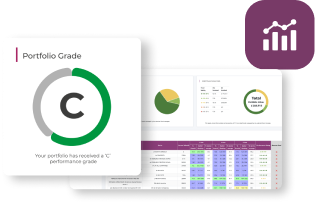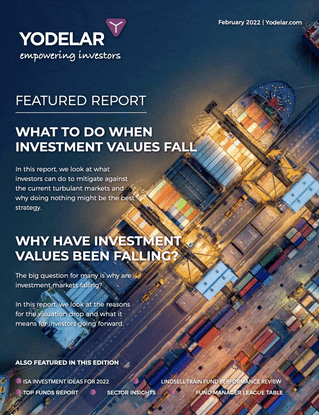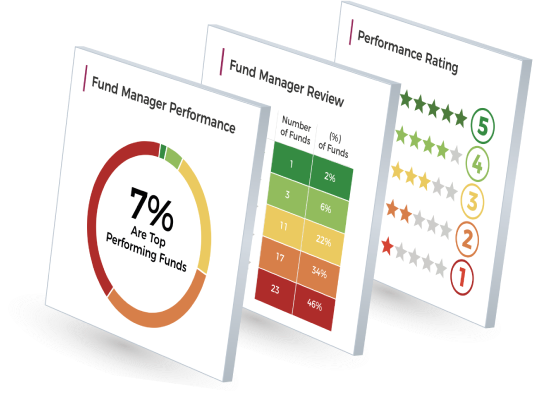- Trump’s tariffs are shaking global markets - what does this mean for your investments?
- Rising costs, market volatility, and shifting trade dynamics - UK investors need to be prepared.
- Key sectors are at risk, but some stand to gain - are you positioned correctly?
- From North American equities to infrastructure, discover where the real opportunities lie.
- This article will help investors navigate uncertainty through smart investment strategies.
President Donald Trump’s recent announcement of substantial tariffs has sparked concerns among global investors. The proposed measures include a 25% tariff on imports from Mexico and Canada (postponed by one month) and a 10% tariff on Chinese goods. These policies are expected to have far-reaching consequences, impacting international trade, disrupting supply chains, and contributing to market volatility.
For UK investors, these tariffs could have significant implications on their portfolios, leading to increased economic uncertainty and fluctuating asset values.
This article breaks down how Trump’s tariffs may impact your portfolio and which Investment Association (IA) sectors may benefit. We will also provide insight into how Yodelar can help you navigate these changes with a strategic investment approach.
Potential Implications for Investors
The proposed tariffs by President Trump could have wide-ranging effects on global markets. Trump’s tariffs could drive up costs for businesses, disrupt global supply chains, and push prices higher for consumers. For investors, this means increased volatility, with sectors like automotive and technology potentially driving fund values down as these companies may face reduced profits as key components become more expensive.
Which Sectors Could Benefit the Most from Trump's Tariffs?
Although the proposed tariffs by Trump are likely to create significant shifts in sector performance, certain sectors classified by the Investment Association (IA) could be well-positioned to benefit from these changes.
The sectors that stand to gain focus on protecting against inflation, supporting local manufacturing, diversifying supply chains, and advancing technology.
Below is a more detailed breakdown of why each of the following 5 listed IA sectors could benefit from these tariff-driven shifts.
1. IA North America
Funds in the IA North America sector primarily invest in companies listed in the U.S. and Canada. If Trump's tariffs drive up the cost of imported goods, U.S. firms that manufacture domestically could gain a competitive edge. This may lead to increased investment in U.S.-focused businesses, particularly in manufacturing, infrastructure, and industrials.
Mid- and small-cap companies, especially those in the Russell 2000 index, could be well-positioned. With most of their revenue generated within the U.S., they are less affected by global trade tensions. Any tax incentives or subsidies aimed at encouraging domestic production would provide an additional boost to this segment.
Within North America, sectors that stand to benefit include defence contractors and energy companies, particularly shale producers supported by potential energy independence policies. Industrial automation firms that integrate AI and robotics to reduce reliance on outsourced labour could also see strong growth.
The table below highlights the five highest-quality North American funds and their performance over the past 1, 3, and 5 years.

2. IA Infrastructure
Infrastructure often plays a central role in economic policy during periods of uncertainty. With Trump's previous emphasis on American infrastructure investment, a renewed wave of protectionism could be accompanied by fiscal stimulus directed at domestic construction and redevelopment projects.
Higher tariffs on imported steel, aluminium, and other materials could drive demand for domestically produced alternatives, benefiting firms linked to infrastructure development. Funds with a focus on U.S. infrastructure would be well-positioned to capitalise on increased government spending in areas such as roads, bridges, energy grids, and industrial expansion.
Additionally, restrictions on Chinese technology imports could accelerate U.S. investment in domestic semiconductor manufacturing and other critical infrastructure projects. This would further boost demand for materials, engineering services, and construction firms. Infrastructure funds with exposure to U.S. engineering companies, logistics providers, and materials suppliers stand to benefit from these shifts.

The table above highlights the five Infrastructure funds, which have ranked among the top 25% or 50% in the sector over the past 1, 3, and 5 years, based on their performance.
Related Article: The rise of Infrastructure funds in UK Portfolios
3. IA UK Index-Linked Gilts
IA UK Index-Linked Gilts is one of the five sectors we have identified as offering potential benefits if Trump’s tariffs are implemented, primarily due to their role as an inflation hedge. Tariffs drive up the cost of imported goods, increasing inflationary pressures as businesses pass higher costs on to consumers. This effect is particularly pronounced when essential goods and commodities are targeted, making inflation-linked assets more appealing.
UK index-linked gilts adjust their payouts in line with inflation, providing a safeguard against rising prices. If global economic growth slows due to trade tensions, central banks - including the Bank of England - may need to balance inflation control with economic stability. In such an environment, investor demand for inflation protected fixed income assets could increase, leading to greater capital flows into this sector.
While funds in this sector could attract defensive investment from investors seeking to preserve purchasing power, index-linked gilts are primarily designed for protection rather than strong capital growth. Their performance is tied to inflation trends and central bank policy, making them more suitable as a stabilising element within a portfolio rather than a high-growth opportunity.

4. IA Global Emerging Markets
Although Trump’s tariffs primarily target China, they could still create opportunities for emerging markets as companies look to diversify their supply chains and shift production to other low-cost regions. Countries such as Vietnam, India, and Brazil may attract increased foreign investment as businesses seek alternative manufacturing hubs to mitigate tariff-related costs and geopolitical risks.
Funds in the IA Global Emerging Markets sector with significant exposure to these economies could benefit from capital inflows and economic expansion. India, in particular, has been actively developing its manufacturing sector through government incentives, which could make it a key destination for foreign direct investment. However, Mexico’s previously expected advantage may now be at risk. While its proximity to the U.S. and participation in the USMCA (United States-Mexico-Canada Agreement) had positioned it as a strong alternative to China, the newly proposed 25% tariffs on Mexican exports to the U.S. could undermine its competitive edge. If these tariffs are implemented, they may deter investment and disrupt supply chains rather than drive growth.
Additionally, emerging markets that are strong commodity exporters may benefit if tariffs drive up the cost of U.S. or Chinese-produced alternatives. Brazil, for example, could see increased demand for its agricultural exports, while South Africa may gain from higher metal exports as supply chains adjust to shifting trade dynamics.
.
The table above presents the top five Global Emerging Market funds, showcasing their 1-year, 3-year, and 5-year performance relative to sector averages. They have earned a top 4 or 5-star rating based on their strong performance.
5. IA Technology & Telecommunications
Funds in the IA Technology and Technology Innovations sector could benefit from Trump’s tariffs as trade restrictions drive investment into domestic production and innovation. Higher tariffs on Chinese technology imports, including semiconductors and electronic components, may accelerate the shift toward U.S.-based manufacturing. This could boost demand for companies like Nvidia, AMD, and Intel, particularly as the U.S. prioritises semiconductor self-sufficiency.
Restrictions on Chinese tech firms could also create opportunities for Western companies in cloud computing, AI, and cybersecurity. Microsoft, Amazon, and Alphabet may gain from reduced competition and increased government support for domestic tech innovation. Additionally, alternative production hubs such as India, Taiwan, and South Korea could see stronger demand for semiconductors and advanced manufacturing, benefiting firms like TSMC and Samsung.
While tariffs may initially increase costs for some businesses, they are likely to accelerate automation, supply chain diversification, and investment in key technology sectors. Funds in this sector, particularly those with exposure to AI, robotics, and semiconductor manufacturing, could see long-term growth as these trends unfold.

The table above showcases the top five Technology funds, outlining their overall performance metrics, including 1, 3, and 5-year returns. These funds have delivered consistent growth, making them compelling choices for investors looking to invest in the Tech & Innovation sector.
How Trump's Tariffs Could Trigger a Global Slowdown and Impact UK Investors
Trump’s proposed tariffs could shake up global markets, raising costs for businesses and potentially slowing economic growth. While trade barriers often create uncertainty, they can also lead to new opportunities, particularly in industries that benefit from shifts in supply chains, domestic production, and inflation protection.
For UK investors, the impact will depend on how different sectors respond. Some economies, like China and the EU, may face challenges as demand for exports declines. However, other regions, such as India and Brazil, could attract more investment as businesses look for alternative manufacturing hubs. In the U.S., sectors like infrastructure, technology, and energy may see growth as companies focus on domestic production and government incentives.
Certain investment sectors are well-positioned to benefit from these changes. Funds focused on North American companies could gain from increased U.S. investment in domestic industries. Infrastructure related funds may profit as governments prioritise large-scale construction projects. Inflation-linked gilts could provide protection as tariffs push up consumer prices. Emerging markets may see inflows as supply chains shift, while technology funds could benefit from increased spending on AI, automation, and semiconductor production.
Bond markets may react to uncertainty, with demand for safe-haven assets pushing yields lower. However, if tariffs cause inflation to rise, central banks could face difficult decisions on interest rates. Inflation-linked bonds may offer some stability, but traditional fixed-income funds could see increased volatility.
Although Trump’s tariffs bring economic uncertainty, they also create opportunities. Sectors that benefit from domestic production, infrastructure spending, inflation protection, and supply chain shifts could outperform. A well-diversified investment approach will be key to navigating these market changes.
The Importance of Diversification in a Changing Global Market
Investment markets naturally rise and fall, with different sectors and regions leading at various times due to shifting economic conditions, global trends, and investor sentiment. While political decisions, such as Trump’s tariffs, can influence market direction, they do not dictate long-term growth. The broader forces of the global economy ensure that no single industry or region dominates indefinitely.
Technology stocks have been key drivers of market gains in recent years, but history shows that leadership rotates across sectors. At various times, energy, infrastructure, and healthcare have outperformed due to changing demand, innovation, or geopolitical shifts. As economies evolve, new investment opportunities emerge across different industries and regions, reinforcing the need for a well-balanced approach.
Markets have a strong track record of adapting, regardless of political leadership. Even during periods of uncertainty, economies continue to develop, driven by industrialisation, technological advances, and demographic trends. This highlights the importance of diversification not just as a risk management tool but as a strategy to capture growth wherever it occurs.
A well-diversified portfolio spreads exposure across different geographies, industries, and asset classes, helping investors navigate regional trade conflicts or economic downturns while maintaining long-term growth potential. When one sector struggles, another often strengthens, balancing overall performance and reducing volatility.
For UK investors, diversification is particularly important amid ongoing global trade shifts. Defensive sectors, such as healthcare and consumer staples, tend to remain stable during economic slowdowns, while multi-asset funds combining equities, bonds, and alternative investments can provide stability. Additionally, funds with a domestic UK focus may offer some protection from geopolitical uncertainty. By taking a strategic, diversified approach, investors can position themselves for resilience and growth, no matter how global markets evolve.
How Yodelar Can Help You Build a Stronger Portfolio
Selecting the right funds in an evolving market landscape requires expert research and analysis. Many investors unknowingly hold underperforming funds, leading to disappointing long-term returns.
At Yodelar, our portfolio development is rooted in years of exhaustive analysis of the universe of funds and managers. We consistently evaluate over 100 managers, tens of thousands of funds, and 30,000 model portfolios. This ongoing research reveals that only a small subset of funds and managers consistently outperform, with over 90% of portfolios containing chronic under-performers.
These data-driven insights inform our structured portfolio construction process, employing top-tier, proven funds within each asset class based on rigorous backtesting.
As an FCA-regulated firm, we prioritise advanced analytics to support our recommendations. Our objective is to provide independent advice and portfolio management that significantly boosts client returns through detailed research.

















